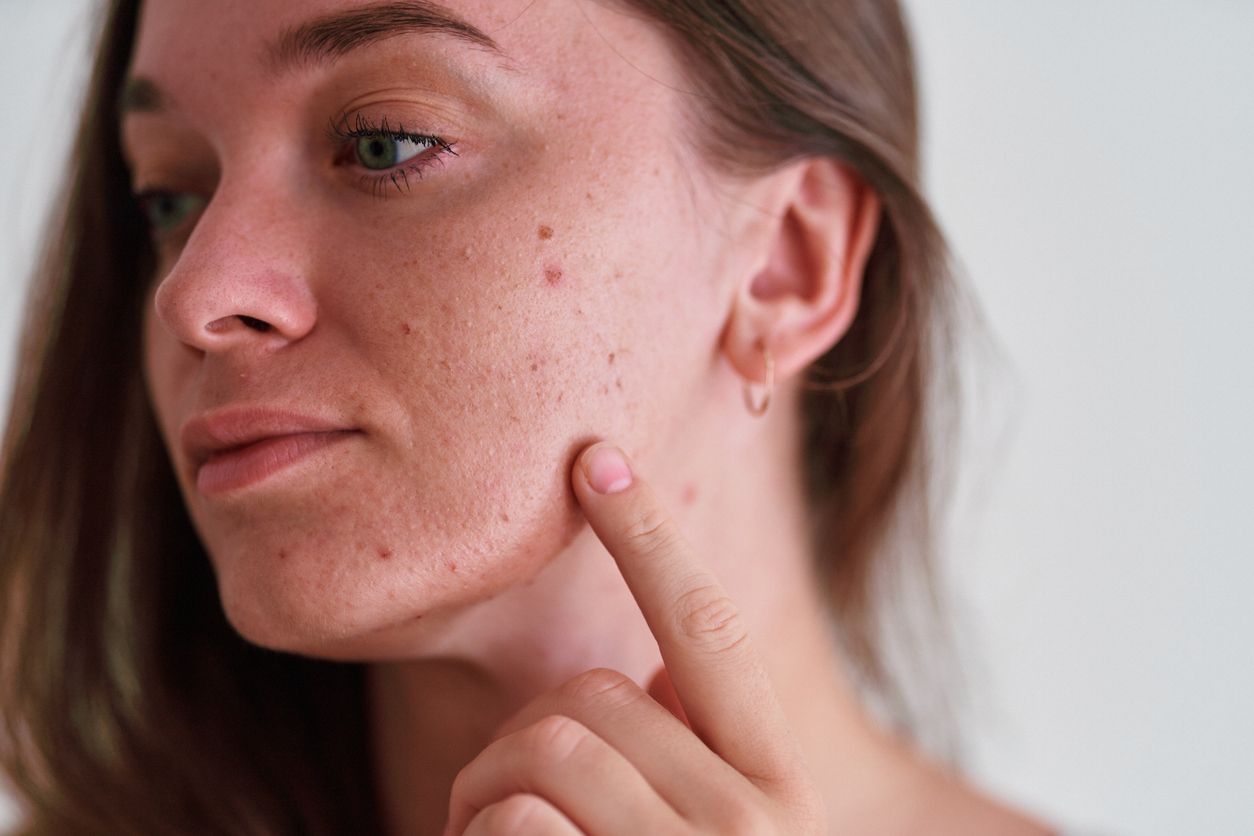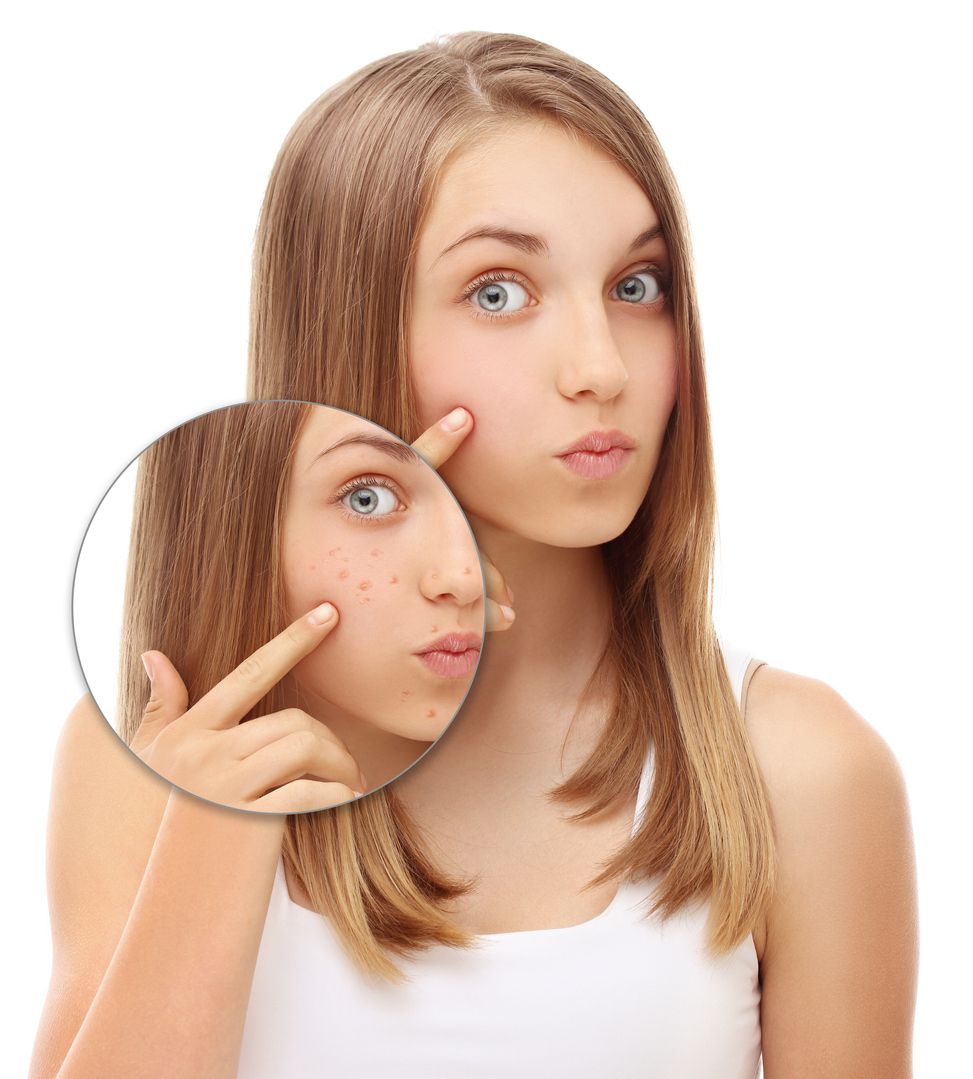Author: Natalie Ng|Updated: 9 June 2025
Dark spots that show up after acne are common, and they don’t always fade as quickly as you’d like. This kind of pigmentation, known as post inflammatory hyperpigmentation, happens when your skin reacts to irritation — not just from breakouts, but also from things like insect bites or small injuries. Your skin produces extra melanin during the healing process, which can lead to uneven skin tone. These marks are more noticeable on darker skin tones and can last longer depending on your skin type and how deep the pigment goes. While some spots fade over time, others stick around. How your skin responds to inflammation, sun exposure, and even certain skin care products can all affect how long they last. You don’t need to settle for dark patches or uneven tone. There are ways to treat post-acne pigmentation, and the best results often come from combining the right approach with a bit of patience. Read on to discover post acne pigmentation treatments that can help fade dark marks and support healthier-looking skin.

Causes of Post-Acne Pigmentation and Factors That Make It Worse

Inflammation triggers excess melanin production
Post inflammatory hyperpigmentation happens when the skin responds to injury or irritation by producing more melanin. This is a natural part of the healing process, but in many cases, the pigment doesn’t fade evenly.
Even subtle marks can become more visible over time if the skin continues to produce melanin at higher levels. This is especially common after active acne, insect bites, or other inflammatory skin conditions.
Triggers that increase the risk of dark marks
Several factors can affect how your skin responds after inflammation. These make it more likely for post-acne pigmentation to develop and last longer:
• Darker skin tones: Skin with more baseline melanin is more likely to develop visible pigmentation after inflammation.
• Sun exposure: UV rays stimulate melanin synthesis, making existing dark spots darker and harder to treat.
• Picking or squeezing pimples: Increases inflammation and disrupts the skin barrier, which raises the chance of pigment buildup.
• Use of harsh skin care products: Over-exfoliating or using irritating ingredients can damage the outer layer and cause uneven healing.
• Delayed healing from acne: The longer a pimple stays inflamed, the more likely it is to leave behind pigmentation.
Common causes of developing PIH
Post-acne pigmentation isn’t always just about acne. It can also appear after other types of skin injuries or irritation:
• Healing from active acne or whiteheads
• Scratches, rashes, or insect bites
• Cosmetic procedures without proper aftercare
• Chemical burns or product reactions
• Chronic skin conditions that increase inflammation

Post-Acne Pigmentation Treatment 1: Advanced Laser Therapy

Laser treatments fade post inflammatory hyperpigmentation
Laser therapy is one of the most effective ways to treat post acne pigmentation. It targets pigment trapped in the outer layer of the skin, helping reduce excess melanin and improve uneven skin tone without damaging the surrounding tissue.
Light wavelengths break down excess melanin
Modern laser devices use controlled light to reach pigment beneath the surface. The energy breaks down melanin into smaller fragments, which the body clears away over time. This helps fade dark spots caused by acne, skin injuries, and other inflammatory skin conditions.
Session process and timeline
During treatment, a technician moves the laser across the skin while it delivers quick pulses of light.
• Session length: 15 to 30 minutes
• Sensation: mild snapping against the skin
• Recommended sessions: 3 to 6
• Frequency: spaced 4 to 6 weeks apart
Laser selection based on skin tone
Different skin tones respond differently to laser therapy. People with darker skin tones may need specific types of lasers that lower the risk of skin irritation or uneven fading.
Choosing the right laser depends on your skin type, how deep the pigmentation is, and whether you’re treating epidermal or dermal PIH. A consultation helps determine the safest and most effective option.
Sun protection and aftercare
To reduce inflammation and support the skin’s natural exfoliation process:
• Avoid sun exposure for two weeks before and after treatment
• Use broad-spectrum sunscreen daily
• Avoid skin care products that may increase irritation
Book Now to Experience
Acne Treatment
1 Minute Self-Registration
Date should not be before minimal date

Post-Acne Pigmentation Treatment 2: Prescription-Strength Retinoid Creams
Retinoids reduce dark spots and support skin renewal
Prescription-strength retinoids are a proven treatment for post acne pigmentation. They help fade dark marks while speeding up the skin’s natural exfoliation process. These vitamin A derivatives increase cell turnover and support your skin’s ability to shed dead skin cells, revealing a more even toned appearance over time.
Retinoids are especially useful when laser treatments are not the right fit for your skin type, skin tone, or budget. They also help prevent future breakouts and improve the look of acne scars, which can reduce the risk of developing PIH again.
Choosing the right prescription retinoid for your skin
Retinoids vary in strength and formulation. Your skin type, tolerance level, and current skin concerns will help determine which one is the most suitable.
• Tretinoin 0.025%: A mild starting point that works well for beginners. Apply two nights a week and increase gradually as your skin adjusts.
• Adapalene 0.3%: A slightly stronger option with lower risk of irritation. Works well for people with sensitive skin or those prone to inflammation.
• Tazarotene 0.1%: A high-strength retinoid often used for more severe cases of post inflammatory hyperpigmentation. Start slowly to avoid skin irritation, and follow with moisturizers to support the skin barrier.
Retinoid plans should match your skin’s needs
Before starting a retinoid, it’s best to consult a dermatologist. A professional will assess your skin tone, acne history, and existing pigmentation to create a treatment plan that matches your skin’s tolerance and goals.
Prescription retinoids work gradually and require patience. You may notice mild peeling or dryness at first, especially if you’re using other treatments like chemical peels or melanin-inhibiting serums.

Post-Acne Pigmentation Treatment 3: Chemical Peels With Dual-Acid Formulas
Combined acid peels treat pigmentation at multiple skin depths
Advanced chemical peel combinations offer more precise results for post acne pigmentation treatment. These newer formulations go beyond traditional single-acid peels by layering two acids with different strengths, allowing them to target both surface and deeper pigment more effectively.
This method is especially useful for uneven skin tone caused by both epidermal and dermal PIH. The combination works through the skin’s natural exfoliation process to lift dark spots while stimulating new cell growth underneath.
How dual-phase peels work on dark patches
These peels are usually applied in two steps:
• First layer: 15% mandelic acid
This alpha hydroxy acid preps the skin by loosening dead skin cells. It’s gentle but effective, especially for darker skin tones and those prone to skin irritation.
• Second layer: 10–15% TCA (trichloroacetic acid)
TCA penetrates deeper into the epidermis, where it breaks up excess melanin and helps fade post inflammatory hyperpigmentation that sits beneath the surface.
This two-step approach treats hyperpigmentation more evenly across different skin types without the harsh side effects of stronger, single-acid peels.
Professional guidance improves safety and results
For ideal results, a series of 4 to 6 treatments is often recommended, with sessions spaced 3 to 4 weeks apart. A licensed professional will adjust the strength and duration based on your skin tone, current pigmentation, and tolerance level.
After treatment, the skin usually peels for 5 to 7 days. During this time, post-peel care is important to support healing and avoid inflammation. Use gentle skin care products, avoid UV exposure, and follow the aftercare instructions provided to achieve optimal results and prevent future breakouts.

Post-Acne Pigmentation Treatment 4: Microneedling With Growth Factors
Microneedling creates controlled micro-injuries to fade dark marks
Microneedling is a popular treatment for post acne pigmentation that works by creating thousands of tiny channels in the skin. These controlled micro-injuries trigger your body’s healing process, encouraging new collagen production and speeding up cell turnover. This helps fade dark spots caused by acne, skin injuries, or inflammatory skin conditions while improving overall texture and tone.
Microneedling is especially effective for treating both surface-level marks and deeper pigmentation. It also supports skin repair in areas affected by acne scars or depressed areas in the tissue.
Growth factors improve collagen production and healing
When combined with growth factors, microneedling becomes even more powerful. Growth factors are proteins that support cell repair and regeneration. As they enter the micro-channels created by the needles, they work deep within the skin to enhance collagen production and reduce excess melanin production.
• Increases collagen by up to 400% in treated areas
• Helps fade pigmentation faster while improving firmness and elasticity
• Speeds up skin’s repair cycle and reduces post inflammatory hyperpigmentation over time
Results can begin to show within 2 to 3 days, but ideal results usually appear around the 12-week mark. You’ll notice a more even skin tone, fewer dark spots, and improved skin texture with continued treatment.
Treatment depth and frequency affect results
Professional microneedling devices use needle depths ranging from 0.5 mm to 2.5 mm. This allows precise control over how deeply the treatment reaches, depending on your skin type, tone, and pigment depth. Most people need 3 to 4 sessions, spaced 4 to 6 weeks apart, with yearly touch-ups to maintain results.
At-home tools are less effective and carry more risk
Although home dermarollers are widely available, they can’t match the precision or safety of professional microneedling.
• At-home needles are limited to 0.25–0.5 mm and don’t reach deeper pigmentation
• Devices used at home carry a higher risk of skin irritation and infection
• Professional settings ensure sterile tools and tailored growth factor use for your skin
Book Now to Experience
Acne Treatment
1 Minute Self-Registration
Date should not be before minimal date

Post-Acne Pigmentation Treatment 5: Natural Brightening Agents From Plant-Based Ingredients
Botanical extracts support pigment reduction with low irritation risk
Natural brightening agents offer a gentle but effective way to treat post acne pigmentation, especially for those with sensitive skin or darker skin tones. These plant-based ingredients work by slowing melanin synthesis, calming inflammation, and supporting the skin’s natural exfoliation process.
Unlike synthetic bleaching agents that often increase inflammation or cause skin irritation, botanical options are milder and better suited for regular use across different skin types.
Effective plant extracts for post-acne dark spots
Many plant-based compounds have been studied for their ability to fade dark patches and improve uneven skin tone. Some commonly used ingredients include:
• Licorice root extract
Contains glabridin, which helps reduce melanin production and soothe inflamed skin. Often used twice daily in serums or creams.
• Kojic acid
A compound derived from mushrooms that lightens dark spots by interrupting melanin synthesis. Best applied at night to support skin recovery.
• Green tea extract
Rich in antioxidants that fight free radicals and reduce inflammation. Helps support a more balanced skin tone.
• Vitamin C (from citrus)
Promotes brighter skin and protects against UV-induced pigmentation. Also supports collagen production and skin healing.
These ingredients can be found in over the counter (OTC) serums, topical treatments, and moisturizers designed to treat hyperpigmentation while supporting your skin’s barrier.
Application and results over time
Start with a patch test to avoid unexpected skin irritation. Once tolerated, apply botanical brighteners consistently—ideally twice daily—to the affected areas. Most users begin to notice improvements in dark spots and skin tone between 8 to 12 weeks of regular use.
To get the best results:
• Introduce one ingredient at a time to monitor your skin’s response
• Use gentle upward motions when applying serums or creams
• Always wear SPF to prevent further melanin production caused by UV exposure

Post-Acne Pigmentation Treatment 6: Targeted Melanin-Inhibiting Serums
Serums block excess melanin at the source
Targeted melanin-inhibiting serums are designed to treat post acne pigmentation by slowing down excess melanin production in the skin. These serums contain active ingredients that interrupt the pigment-making process before it builds up in the outer layer. This helps fade dark spots and post inflammatory hyperpigmentation while supporting an even skin tone.
Unlike general skin care products, these serums focus specifically on pigment control. They’re lightweight, easy to layer, and can be combined with other treatments such as prescription retinoids or chemical peels.
Key application steps and usage tips
To use melanin-inhibiting serums effectively:
• Apply a small amount (usually pea-sized) to clean, dry skin
• Use twice daily, morning and night, for steady pigment reduction
• Layer products from thinnest to thickest texture
• Wait at least 30 seconds between applications to let each layer absorb
• Follow with broad-spectrum SPF 30+ during the day
Many of these serums contain ingredients like azelaic acid, niacinamide, or arbutin — all known for reducing dark patches and calming inflammation without irritating the surrounding skin.
Results develop with regular use
Melanin-inhibiting serums work gradually. Most people begin seeing changes within 4 to 8 weeks. Dark spots caused by inflammatory skin conditions or acne scars may take longer to fade, especially on darker skin tones or when pigment sits deeper in the tissue.
Patience is key. Stick to your treatment plan and avoid switching products too often. With regular use, these serums can help restore a more even toned skin appearance while helping prevent future breakouts from leaving behind new marks.

Post-Acne Pigmentation Treatment 7: LED Light Therapy for Dark Spot Reduction
LED therapy uses light wavelengths to treat pigmentation gently
LED light therapy is a non-invasive treatment that helps reduce post acne pigmentation by using specific wavelengths of light to target pigmented areas. It supports healing, reduces inflammation, and encourages the skin to renew itself without causing damage or irritation.
This method is ideal for people with sensitive skin, darker skin tones, or those looking for a treatment that works alongside topical creams and other treatments. LED therapy is also safe to use over time and requires no downtime, making it easy to fit into your skin care routine.
Wavelengths and their targeted benefits
Each color of LED light addresses different skin concerns related to pigmentation and post inflammatory hyperpigmentation:
• Blue light (15–20 mins)
Targets acne-causing bacteria and helps prevent future breakouts that may lead to new dark spots.
• Red light (10–15 mins)
Reduces inflammation and boosts circulation, supporting skin repair and fading dark patches.
• Yellow light (12–18 mins)
Promotes healing in damaged tissue and helps calm the skin after flare-ups or treatments.
• Green light (15–20 mins)
Calms visible redness and helps fade surface pigmentation caused by UV rays or acne.
Session frequency and expected results
To treat hyperpigmentation effectively with LED light therapy, plan for 2 to 3 sessions per week. Most people begin to see results after 4 to 6 weeks of regular treatments. Sessions are short and painless — you’ll lie under an LED panel while the light works across the treated areas.
Protective eyewear is always worn, and a specialist will guide the timing and light selection based on your skin’s needs. As your treatment progresses, you’ll notice gradual fading of dark marks and improvement in overall skin tone.
Book Now to Experience
Acne Treatment
1 Minute Self-Registration
Date should not be before minimal date

Post-Acne Pigmentation Treatment 8: Deep-Cleansing Acne Treatment to Prevent Future Pigmentation
Clears pores, reduces inflammation, and prevents excess melanin buildup
Post inflammatory hyperpigmentation often starts with clogged pores, excess oil, and acne that doesn't heal cleanly. Preventing new breakouts and calming active inflammation is one of the most effective ways to stop dark spots from forming in the first place. That’s where the Acne Treatment comes in.
This professional, non-invasive treatment uses dual spiral suction with drainage technology to deeply cleanse your skin, remove dead skin cells, and clear out clogged pores. By treating acne at its root, it reduces the risk of developing dark spots and helps prepare your skin for other pigmentation treatments like laser therapy, chemical peels, or topical creams.
How the Acne Treatment supports clearer, more even toned skin
The treatment follows a three-step process designed to restore balance and calm inflammation:
• Step 1: Skin preparation and patch test
Your therapist explains the treatment process and performs a patch test to make sure your skin tolerates the device without irritation.
• Step 2: Deep cleansing and microdermabrasion
A dual spiral probe exfoliates the outer layer, unclogging pores and draining out oil, debris, and dead skin cells. This helps reduce active acne, blackheads, and whiteheads.
• Step 3: Hydration and collagen support
A medical-grade serum is infused into the skin to calm sebaceous glands, hydrate dry areas, and support collagen production. This helps prevent future breakouts while improving overall skin texture.
Advantages of adding this treatment to your routine
This acne-focused facial works especially well as a support treatment alongside other post acne pigmentation solutions. By targeting the causes of acne and inflammation, it helps:
• Prevent future breakouts that lead to dark spots
• Reduce skin irritation that triggers melanin production
• Support the skin’s natural exfoliation process
• Improve hydration without clogging pores
• Balance oil levels and promote smoother skin
The treatment is suitable for most skin types, including those with moderate to severe acne, acne scarring, or inflamed skin. With no downtime, you can return to your normal activities right after your session.
For best results, a monthly session over the course of 10 to 12 treatments is usually recommended. This helps your skin stay consistently clear and reduces the chances of developing new post acne pigmentation.
Ready to reduce breakouts, support clear skin, and prevent dark spots before they start? Book the Acne Treatment today and take the first step toward healthier skin.

Difference Between Acne Pigmentation and Acne Scars
Pigmentation affects color, scarring affects texture
Many people confuse post acne pigmentation with acne scars, but they are not the same. Each results from different skin responses and requires different types of treatment.
Post inflammatory hyperpigmentation (PIH) causes dark spots or patches that change your skin tone but do not affect its texture. These marks form when inflammation causes the skin to produce more melanin. The pigment settles in the outer layer and becomes visible as brown, red, or purple marks, depending on your skin tone.
Acne scars, on the other hand, affect the structure of your skin. These form when inflammation damages deeper layers of tissue during the healing of a breakout. As a result, the skin may lose or build up collagen unevenly, leading to textural changes like:
• Depressed scars (atrophic): shallow or deep indentations in the skin
• Raised scars (hypertrophic): thicker or elevated patches that sit above the surrounding skin
Identifying your skin concern helps you choose the right treatment
Pigmentation fades over time, especially with the help of topical creams, chemical peels, or laser treatments that target excess melanin. Scarring, however, requires treatments that affect the deeper tissue — such as microneedling, subcision, or energy-based skin therapy.
Some people experience both at once: dark marks on top of textured scars. In these cases, treating pigmentation first often makes it easier to see the underlying skin texture clearly and guide the next step of your treatment plan.
F8 Hair Regrowth TreatmentBook Now to Experience
Acne Treatment
1 Minute Self-Registration
Date should not be before minimal date
FAQ
1. Can post acne pigmentation go away on its own without treatment?
Yes, in some cases post inflammatory hyperpigmentation (PIH) can fade on its own, especially if the pigment is only in the outer layer of the skin (epidermal PIH). This process can take several months or longer, depending on your skin tone, sun exposure, and whether you experience new breakouts. For deeper or long-standing dark marks, treatment is often needed to speed up the fading process and improve the appearance of your skin.
2. Is it safe to treat post acne pigmentation during active acne flare-ups?
Treating pigmentation while you still have active acne can be tricky. Some treatments, like prescription retinoids or azelaic acid, can target both acne and pigmentation at once. However, more intensive options like laser treatments or chemical peels may be postponed until breakouts are under control. Using the wrong treatment during inflammation can increase the risk of further skin irritation and excess melanin production. A dermatologist can help create a plan that manages both conditions safely.
3. Can people with oily skin use pigmentation treatments safely?
Yes, most post acne pigmentation treatments are suitable for oily skin, but the products or methods may need to be adjusted. People with oily skin often benefit from lightweight serums, non-comedogenic topical treatments, and in office treatments that control oil production while fading dark spots. Ingredients like glycolic acid and niacinamide are often used to support clearer, even toned skin without clogging pores.
4. Do UV rays make post inflammatory hyperpigmentation worse?
Yes, UV exposure can make pigmentation darker and harder to fade. UV rays stimulate melanin production, which can deepen existing dark spots and cause new ones to form, especially in people with darker skin tones. This is why daily use of SPF 30+ is critical when treating post acne pigmentation, even on cloudy days. Unprotected sun exposure often leads to uneven skin tone and slows down results from pigmentation treatments.
5. What’s the difference between epidermal PIH and dermal PIH?
Epidermal PIH occurs in the upper layers of the skin and usually appears as light brown spots. This type often responds well to over the counter serums and topical creams. Dermal PIH affects deeper layers and appears darker, sometimes bluish or grey. It's more common in severe cases or after deeper skin injuries. Dermal PIH usually takes longer to treat and may require in office treatments like microneedling, laser therapy, or a dermatologist-guided plan to achieve optimal results.
Recommended Articles
COPYRIGHT© NEW BEAUTY MANAGEMENT LIMITED 2025. ALL RIGHT RESERVED.




